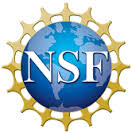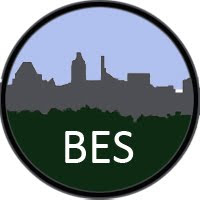This research was supported by funding from the NSF Long-term Ecological Research (LTER) Program. This material is based upon work supported by the National Science Foundation under Grant Nos. DEB-1637661 and DEB-1855277. Any opinions, findings, and conclusions or recommendations expressed in this material are those of the author(s) and do not necessarily reflect the views of the National Science Foundation.
The Baltimore Ecosystem Study has been a National Science Foundation Long Term Ecological Research (LTER) site since 1998. Visit other LTER sites.
 |
 |

Birding While Black in Baltimore – part 2
Today our guest blogger is Dr. Ela-Sita Carpenter. She is a Baltimore Ecosystem Study graduate student alumni and #BlackBirdersWeek participant. I feel immensely lucky to be a birder, life-long resident, […]
BES LTER update
The BES LTER is currently in a synthesis stage, analyzing our long-term data in new and creative ways. Project Director, Emma J. Rosi, explains exactly what that means in this […]
Latest BES LTER BioScience paper featured in podcast
BES LTER Director Emeritus, Dr. Steward Pickett, discusses ‘Theoretical Perspectives of the Baltimore Ecosystem Study: Conceptual Evolution in a Social–Ecological Research Project’ on the latest BioScience Talks podcast. Discover how […]
The importance of the new BES LTER theoretical perspectives paper
Theoretical Perspectives of the Baltimore Ecosystem Study: Conceptual Evolution in a Social–Ecological Research Project by Pickett et al. is an important addition to urban ecology literature for several reasons. Urban […]
EDI 2020 Summer Fellowship Program
https://environmentaldatainitiative.org ENVIRONMENTAL DATA INITIATIVE Follow EDI on Twitter: @EDIdatapackages and @EDIgotDataEDI Office Hours: Wednesdays, 3-4PM ET EDI Summer 2020 Fellowship Program EDI is excited to announce nine ecological data management training fellowships for the period 9 […]
Post-doctoral Position – Urban Environments, Biodiversity and Conservation
The Centre for Urban Environments and School of Cities at the University of Toronto are seeking applications for a 2-year Post-Doctoral Researcher to study Urban Environments, Biodiversity and Conservation. This […]
The Ecological Nugget at the Heart of Urban Theory
Steward T.A. Pickett and Emma J. Rosi Several researchers from the Baltimore Ecosystem Study (BES) have a manuscript entitled “Theoretical Perspectives of the Baltimore Ecosystem Study: Conceptual Evolution in a […]
2020 RAY Diversity Fellowship Applications Now Open
We are pleased to announce that the 2020 application cycle for the Roger Arliner Young (RAY) Diversity Fellowship is now open! The RAY Diversity Fellowship is a two-year (1 year with […]
Breaking the Baltimore Runoff Machine
Steward T.A. Pickett When one traverses the old rowhouse neighborhoods of Baltimore, the immediate impression is a collection of buildings in intimate connection. In the 19th century neighborhoods, which served […]
Low-Income Baltimore Blocks Host Bigger, More Dangerous Mosquitoes
Scientific American reports on BES LTER mosquito research… “A new study published last October in the Journal of Medical Entomology found that in Baltimore, low-income neighborhoods bear the biggest burden: they have […]